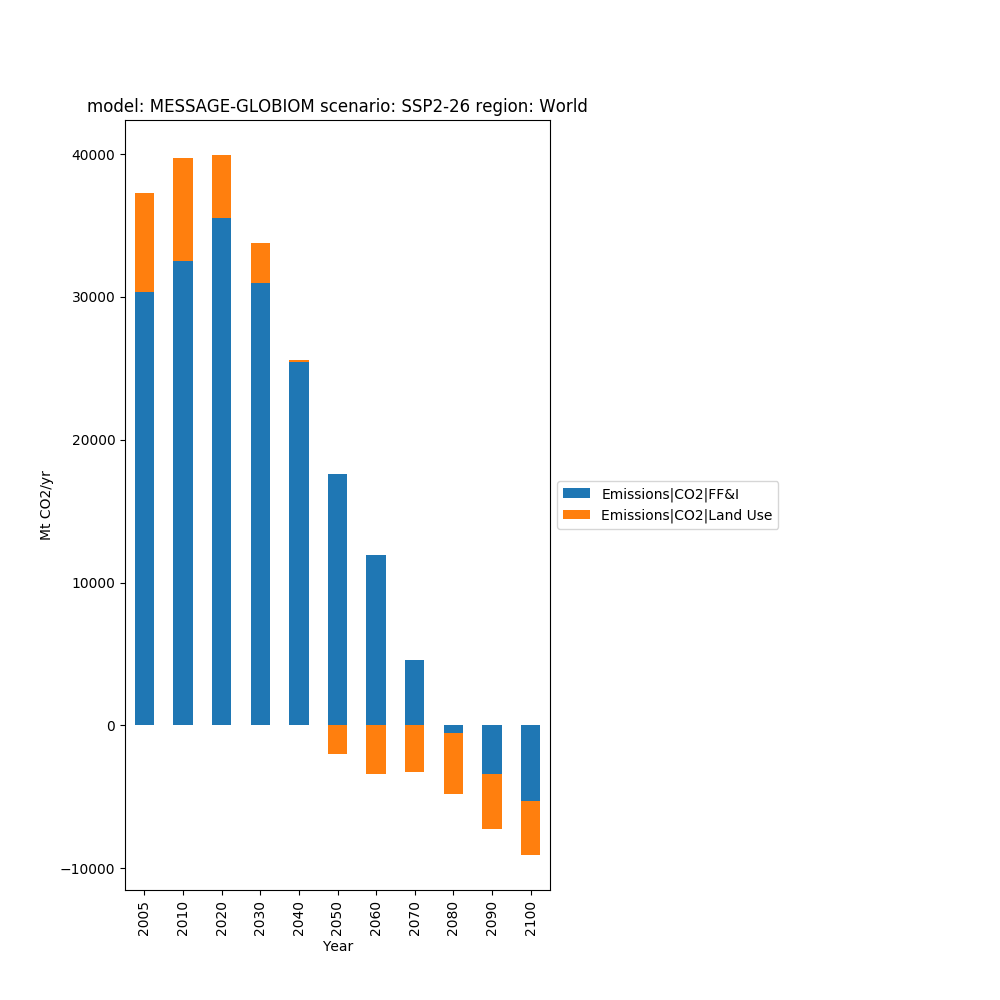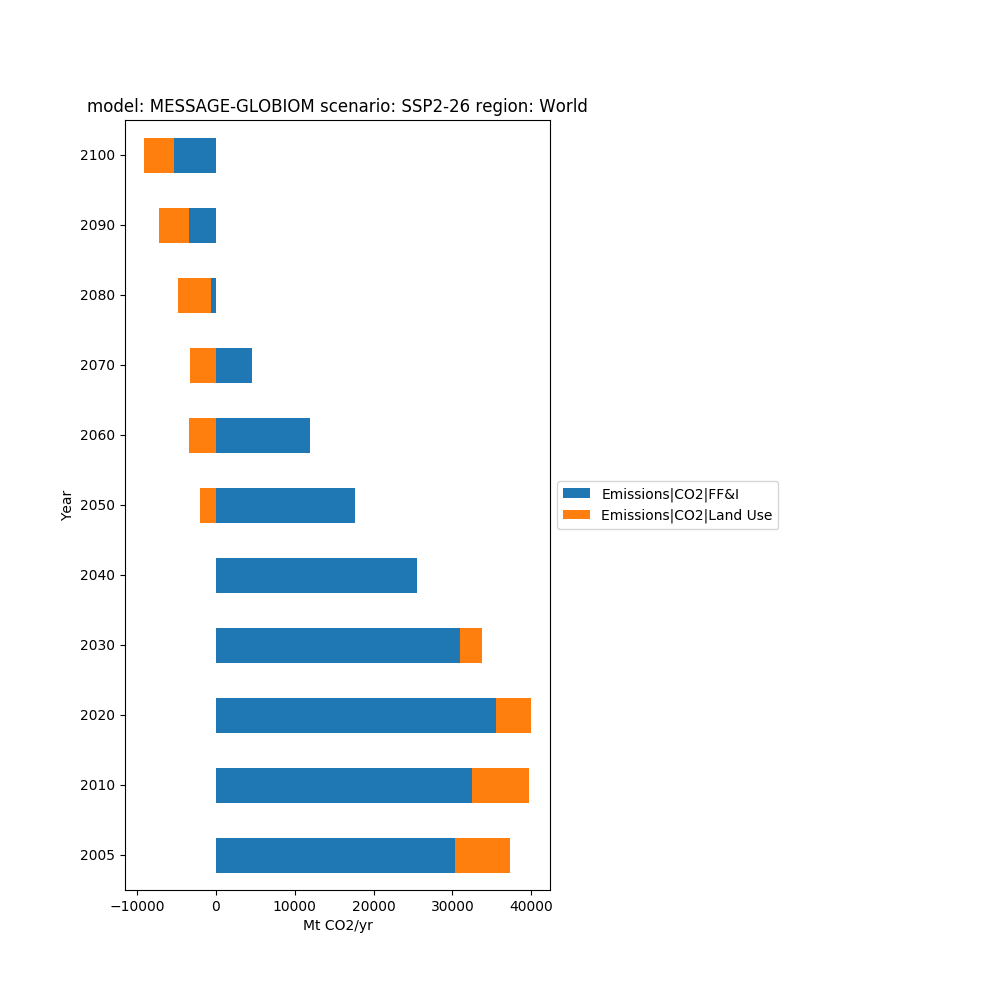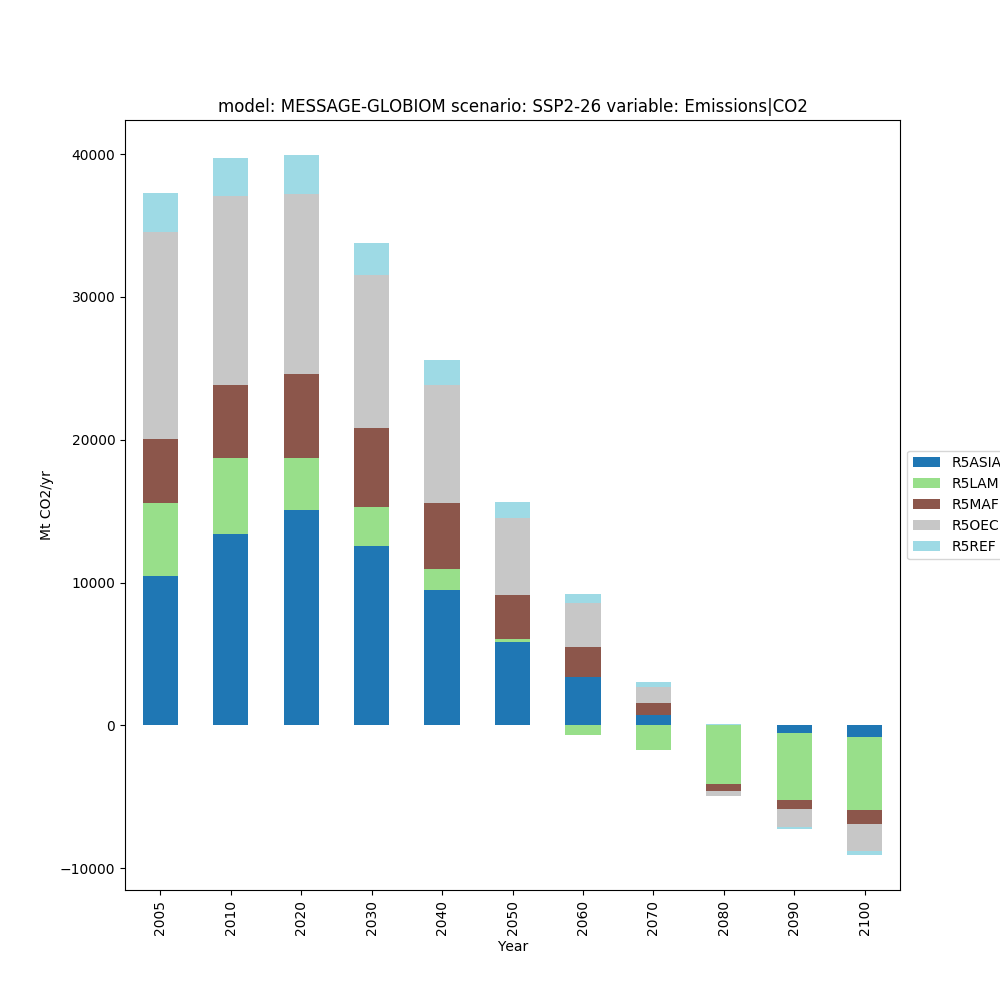Plot Data as a Bar Plot¶
# sphinx_gallery_thumbnail_number = 3
import matplotlib.pyplot as plt
import pyam
Read in some example data
fname = 'data.csv'
df = pyam.IamDataFrame(fname, encoding='ISO-8859-1')
print(df.head())
Out:
model scenario region variable unit year value
9 MESSAGE-GLOBIOM SSP2-26 R5ASIA Emissions|CO2 Mt CO2/yr 2005 10488.011
15 MESSAGE-GLOBIOM SSP2-26 R5LAM Emissions|CO2 Mt CO2/yr 2005 5086.483
12 MESSAGE-GLOBIOM SSP2-26 R5MAF Emissions|CO2 Mt CO2/yr 2005 4474.073
3 MESSAGE-GLOBIOM SSP2-26 R5OECD Emissions|CO2 Mt CO2/yr 2005 14486.522
6 MESSAGE-GLOBIOM SSP2-26 R5REF Emissions|CO2 Mt CO2/yr 2005 2742.073
We generated a simple stacked bar chart as below
data = df.filter({'variable': 'Emissions|CO2|*',
'level': 0,
'region': 'World'})
fig, ax = plt.subplots(figsize=(10, 10))
data.bar_plot(ax=ax, stacked=True)
fig.subplots_adjust(right=0.55)
plt.show()

We can flip that round for a horizontal chart
fig, ax = plt.subplots(figsize=(10, 10))
data.bar_plot(ax=ax, stacked=True, orient='h')
fig.subplots_adjust(right=0.55)
plt.show()

We don’t just have to plot variables, any data or metadata associated with the IamDataFrame can be used.
data = (df
.filter({'variable': 'Emissions|CO2'})
.filter({'region': 'World'}, keep=False)
)
fig, ax = plt.subplots(figsize=(10, 10))
data.bar_plot(ax=ax, bars='region', stacked=True, cmap='tab20')
plt.show()

Total running time of the script: ( 0 minutes 0.360 seconds)